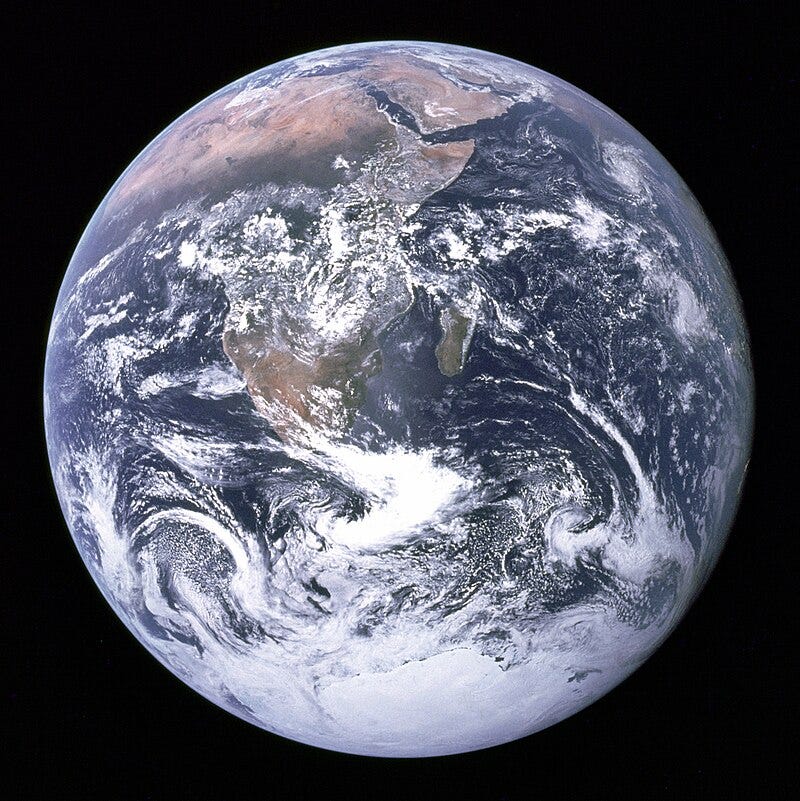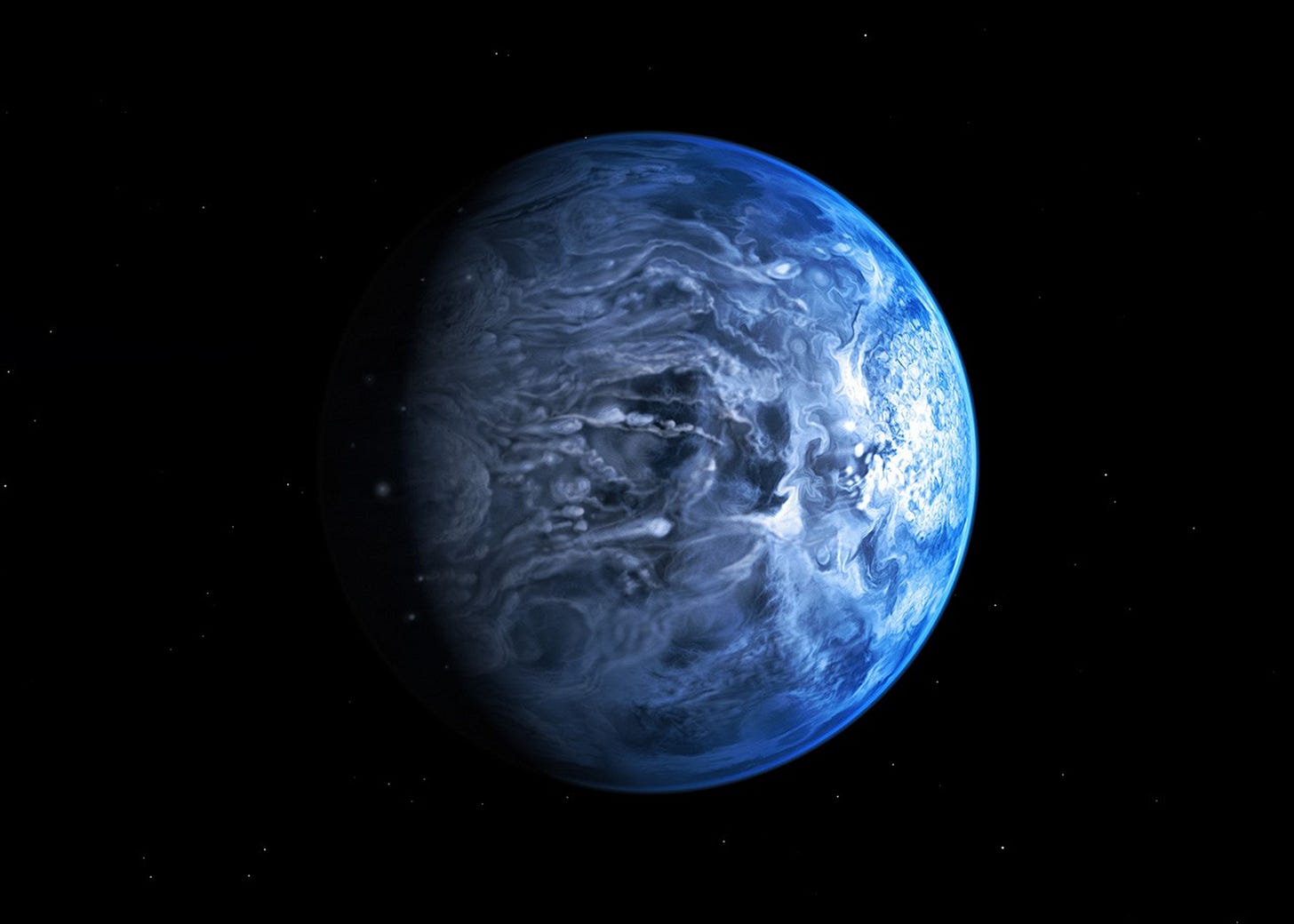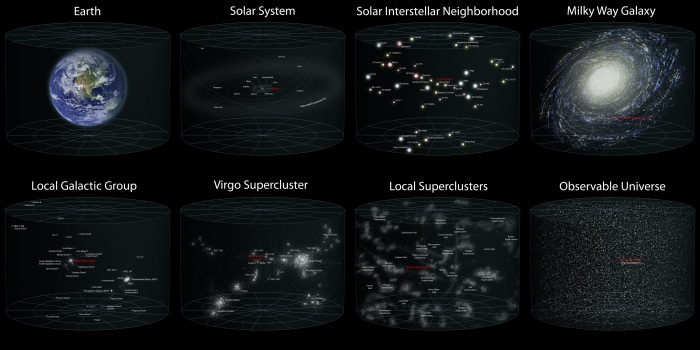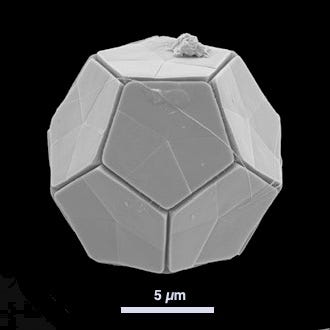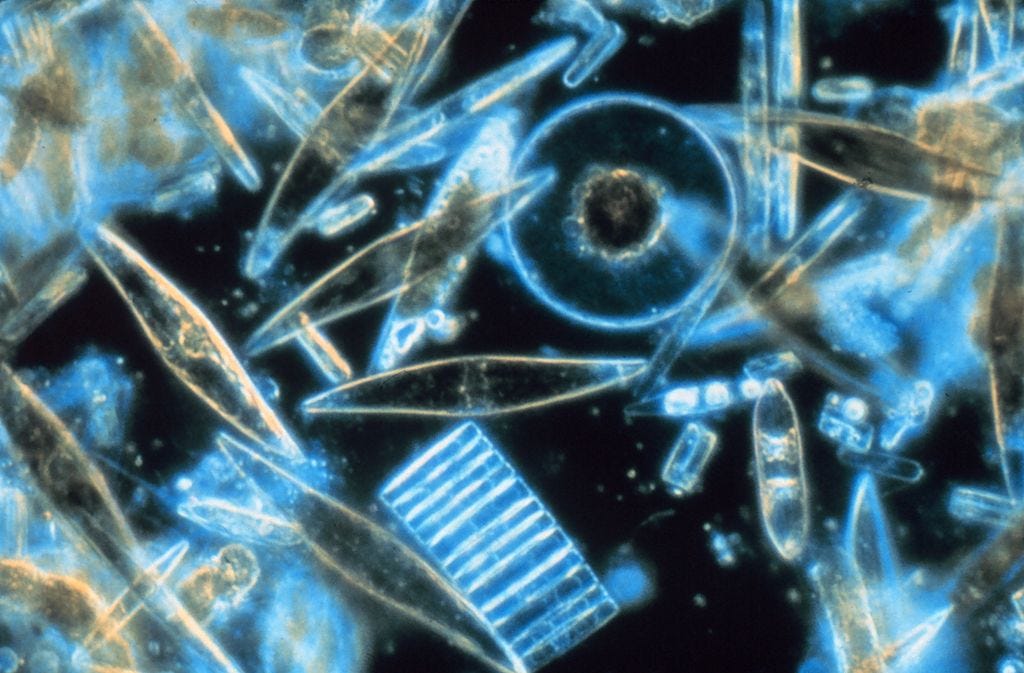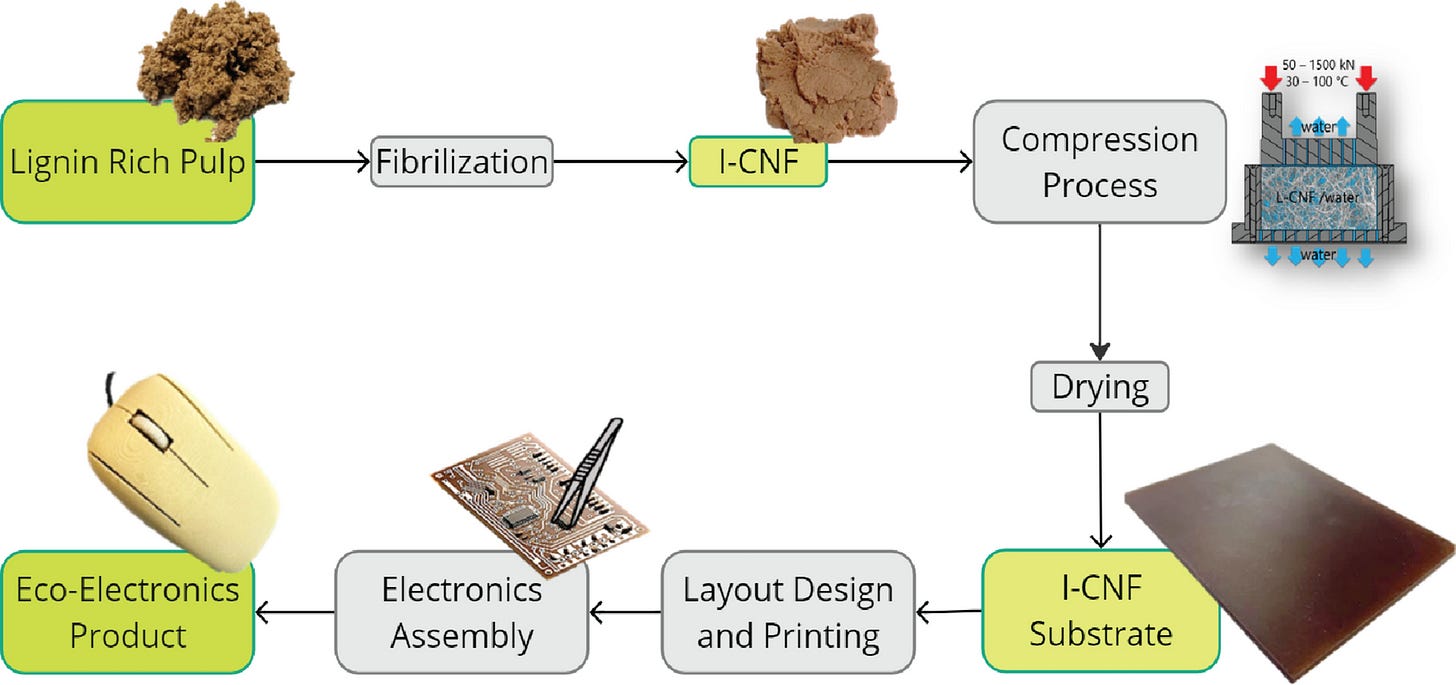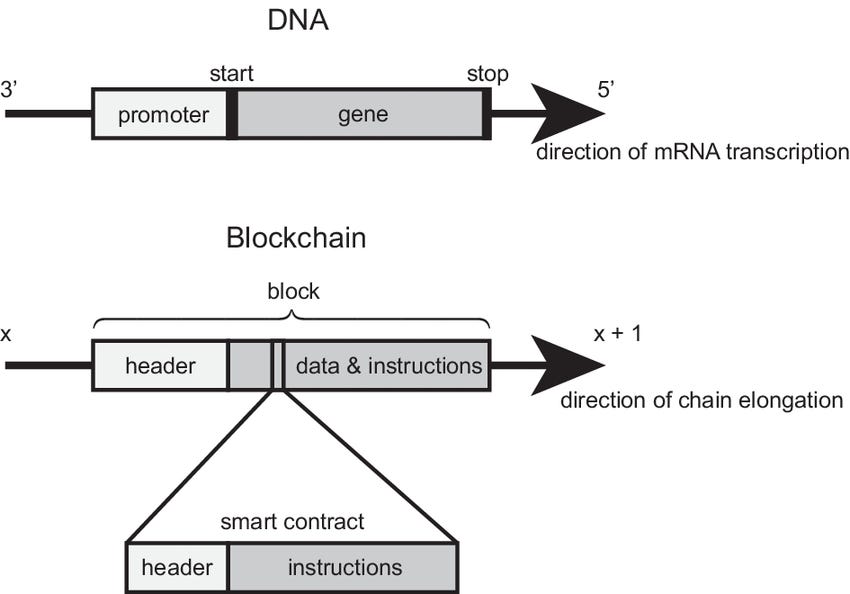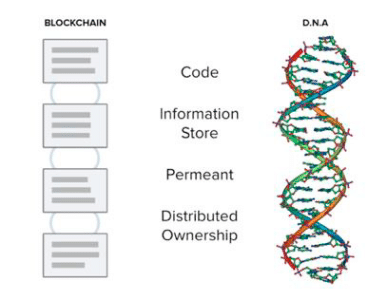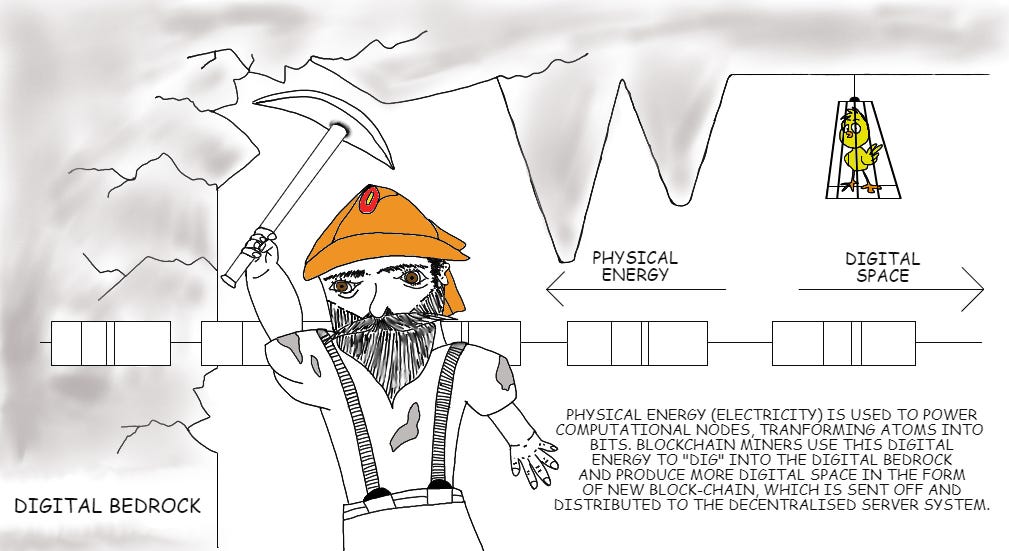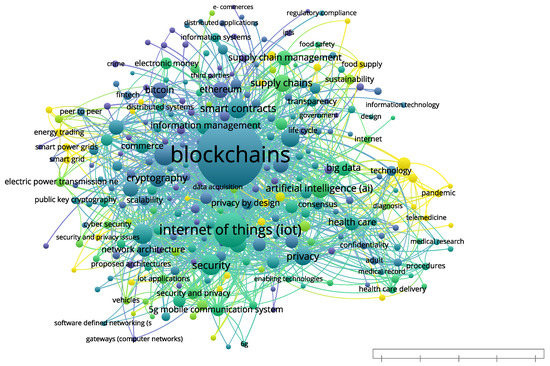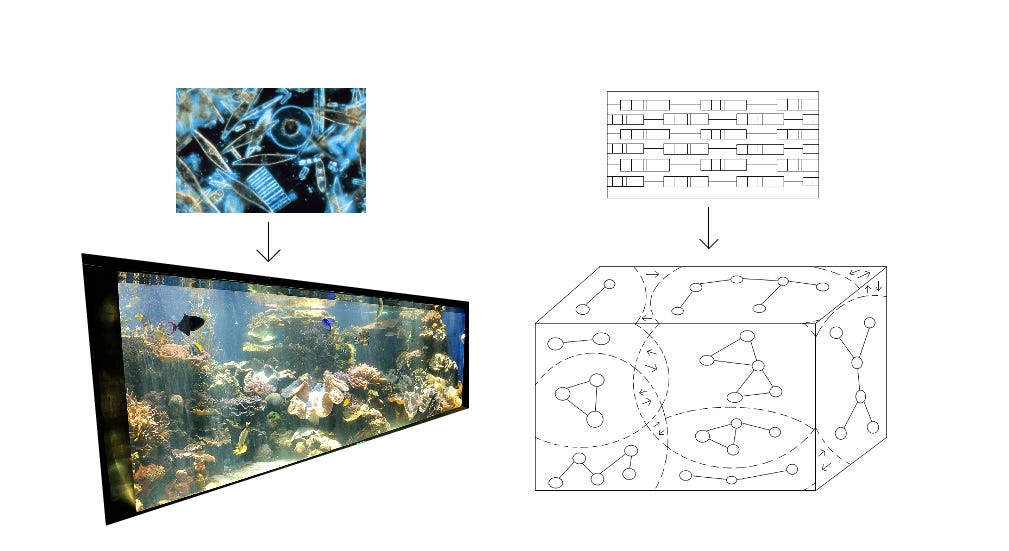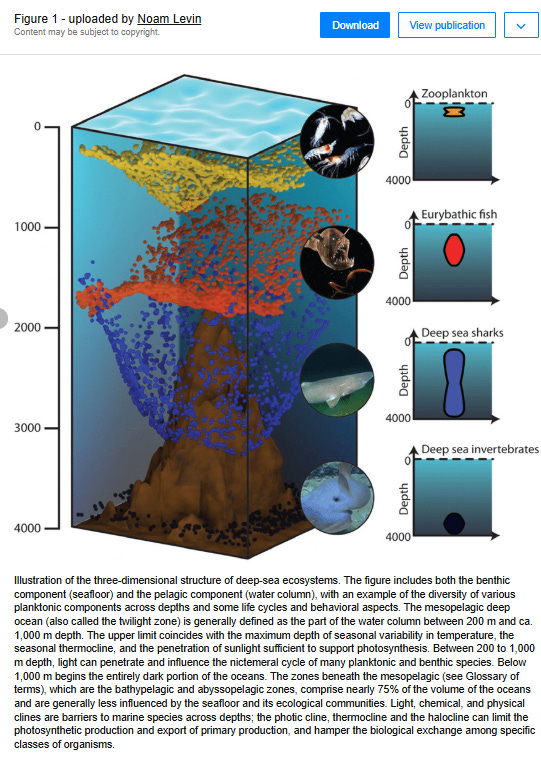Keepers of the Blue
To get a grip on the importance of Expanses, do me a favour: close your eyes and pan out from your place on Planet Earth. Yes, perfect—keep going. A little more. Wait—no—stop… not that far…
Fine, I guess whilst we are up here, and out this far, it would be silly to ignore the giant cosmic web we have just run into. I hate walking into webs as much as the next person, but here the web is less Eight Legged Freaks and more “a sort of scaffolding that cradles everything that exists within the universe.”1 See, much more comforting.
Not wanting to lose ourselves in the comfort of an infinite Communiverse, let’s zoom back in a bit. There is a reason why those that have been fortunate (and brave, and crazy) enough to stare back down at their home-rock after launching themselves in a metallic tube up into outer-space refer to said rock as our “Blue Planet”.2 With a vast majority of our biosphere covered in deep dark depths—an expanse—it would also be fair to wonder what the underlying substance of all that blueness really is. By this I mean: what is the underlying structure - substrate - responsible for keeping our rock blue?
In a one word over-simplification: plankton.
Whilst phytoplankton may not be the sole source of oceanic colour, it is a primary contributor. More generally, plankton can be regarded as the predominant underlying oceanic substrate responsible for the continuing health of our oceans due to their role in the vast underwater ecosystems spanning the totality of our biosphere. Planktonic life is found throughout Earth’s oceans. Microscopic plankton-like algae, specifically cyanobacteria, represents the most abundant organism in our oceans. Having existed for over 3.5 billion years, plankton’s ancient ancestors - stromatolites - are some of the oldest surviving organisms on Earth. When combined, cyanobacteria like prochlorococcus and “larger” forms of phyto-plankton produce around 70-80% of the oxygen in our biosphere. In fact, out of every ten breaths, you can thank plankton for at least seven of them being rich in oxygen. Reef fish and reef-building corals rely on zooplankton as their main source of food.3 Like a game of marine bio-Tetris, the geometric morphology of microscopic diatom plankton are at the base of most food chains. Holding them up, keeping them stable.4 Plankton are one of those small things that are a great contributor to a larger system’s stability. And, when that system is the majority of a blue planet, then I guess we have a lot to be thankful for.
The Blue Marble - plankton, at once a substrate and a living system, is a major contributor (Source: Public Domain)
Another blue planet you probably would be less thrilled about being stuck on (Source: NASA)
But let’s not get complacent. Lest we forget we are floating above our planet right now. If we think about the description of cosmic web from earlier, the “scaffolding that cradles everything that exists within our universe”, then I guess we could also describe this web as a sort of cosmic substrate. Think of the “strings” of the web as cosmic “filaments”, in this case representing material and objects that sit between galaxies, visually and physically connecting them. The predominant underlying substrate here would be plasma. But that is another story for another day. Structurally, in general sense, galaxies sit within and at the intersection of these filaments. Looking closer, as large objects enter into this web their gravitational pull attracts other objects from “local” space and before you know it these objects form sets, take on organisational forms, and at the scale of large cosmic structures can become galactic superclusters and Great Walls. As it turns out, we have a lot to thank the cosmic web for too.
Scale of cosmic systems and organisational structures; voids in space are most prominent in local superclusters and the “observable universe” that just keeps on expanding (Source: CCA 3.0)
Bio-Analagous Substrates
All this to say that, expanses, from our water-world to our cosmic-cradle, contain substrates, like plankton and plasma, and those substrates become bedrock for the growth of structures and further diversity. Sometimes more complex structures, systems, and objects emerge. Sometimes even living systems.
Returning to something more tangible, viewing microscopic plankton under an assembly-orientated lens sees them as objects in a vast chain of causal structure in the unique aquatic assembly space of the biosphere and hydrosphere. Following research methodology presented in the previous articles, namely Lee Cronin and Sara Walker’s controversial yet undeniably fascinating “Assembly Theory” (AT), in such an assembly theoretic model of the water-borne substrate we can describe plankton as having a “higher copy” number when compared to us (humans). In short, this means there are more plankton in existence than us. When compared to us, however, plankton have a smaller “assembly index”. What this implies is that there are less steps between a whole plankton and its smallest reducible part when compared to a whole person and their smallest reducible part. The idea goes, when something has both a high copy number and a high assembly index it is likely to feature “complexity” in system terms, and this means it has undergone high rates of selection during its “assembly”. Under this context, it remains fascinating to see how a less complex object can act as a key component in such a vast complex system like our oceanic ecosystems.
What really is plankton? Molecular structures, assembled in certain patterns and repeated over and over again to form proteins, cells and in the case of phytoplankton, considering they have no vital organs, not much else. Yet, one look at any basic oceanic food web demonstrates that these little substrative organisms provide the blueprints for more complex objects (with higher assembly indices) to be assembled, leading to more complex organisms and even other forms of planktonic life, like zooplankton, which do contain vital organs and have more autonomy. These objects provide the support structure for even more complex objects to assemble, like amphipods and small fish. Going up the causal assembly chain of animal morphology we hit our heads on organisms like orcas, dolphins, octopus, blue whales, giant squid and much much more. Not wanting to lose you now, my point here is that simple objects (in AT terms), objects that we consider organisms in the sense they are a living system, can act as a substrate producing and supporting a lot more than themselves. And morphologically, it makes sense. I hate to bring it back to Tetris again but I mean, just take a look at the common coastal phytoplankton below… if that does not resemble an actual building block, geometric, symmetrical, morphologically self-consistent, well, I don’t know what does.
The “Braarudosphaera Bigelowii” in all its dodecahedral glory! (Source: CCA 4.0)
Phytoplankton: We owe a lot to these little Keepers of the Blue, and the rest of their microscopic kind. (Public Domain)
If we were to use the term “substrate” in its most deflationary sense, we would be referring to the foundations of something—the structure which underlies everything else. In terms of constructing a building, for example, the substrate refers to the layers beneath the site’s top-soil, like bedrock and specific soil-types. This determines what foundations will be assembled for the rest of the building to be built up from. The foundational requirements drastically alter the way in which the final assemblage looks, and to some extent functions. Adding a biological lens of observation, an organism like plankton suggests substrate can also become the “base on which an organism lives”.5 In a systems theoretic sense this means a system in which other systems can be constructed from. Systems—in this case, living thermodynamic organisms like plankton - become embedded into a positive and negative causal relation with their surrounding environment and the evolution of certain other systems and subsystems also inhabiting this space. We can see that plankton at equilibrium positively correlates with success of the local ecosystem as bigger organisms need smaller organisms to survive,6 and those smaller organisms need plankton to survive, forming a dependency chain that begins with the humble plankton and quickly scales up. Substrates not only help form an understanding of the larger support-structure, like layers beneath the top-soil does in physical construction or plankton does with our biospheres vast underwater ecosystems, substrates also provide the basis for other life to spring-board off of. Straight into the deep end. No doubt over time a substrate existing within a rich, expansive fluid, one that is clouded in an ephemeral darkness and hiding a highly stimulating, fast-paced environment, may allow for object evolution (through selection?) to increase objective complexity. It does not take a microscope to see how the results of such a dynamic assembly space manifest through diverse living systems: the ocean is a crazy place full of even crazier things. I think we need a bigger boat…
More sustainable PCB’s made from the cellular material of plants blur the lines between biological and artificial (Source: Dudnyk et al, 2025)
But this idea of a substrate is not just limited to the biosphere, the cosmos, nor the physical space in general. The technosphere also runs off and relies on such an underlying substrative structure to provide stability and a means for “evolution”, only in the digital expanse this evolution is fueled by artificial substrates. Often silicon or fibreglass is employed, but metal, plastic or glass are also produced for use in the assembly of printed circuit boards (PCBs) that provide a substructure for microchips and other electronic components that power conventional digital ecosystems. But that is so Web 2.0… Let’s switch up our perspectives to Web 3.0. In the newly envisioned version of the internet, tales of advanced ecosystems based around decentralised autonomous organisation, completely flattening the hierarchy of information and financial monopoly, run rampant. Just as silicon provides the physical substrate powering artificial spaces, completely artificial substrates become the plankton of the deep dark Web 3.0? What would that look like?
Something still nags at me. If we take an assembly theoretic perspective to the nth degree, then our ontological world model seems to posit that some type of assembly space exists at a fundamental level of reality's cause and effect structure. Using terminology familiar to our discussion thus far, then this certainly feels substrative. And the latest evidence supports this. Without getting into too much technical detail, researchers like Carolina Figuerido working in the newly uncovered domain of “surfaceology” are said to reveal basal topological layers of the cosmos, mapped using obscure polyhedral forms like the cosmohedron, the assiocahedron and the correlatron. The irony is not lost that the same basic polytopal structure proposed to be the underlying topological substrate for the entire observable cosmos is also found in a tiny fleck of plankton. If nothing else it is a suitable reminder that the basic form, function, and features constituting a “substrate” can be found across physical and abstract spaces alike.
Naturally, given our bigger picture here, it begs the question: what kind of underlying substrative assembly spaces do we expect to find in the digital ecosystem? Indeed, ecosystems observed in nature, as well as galactic nurseries and cosmic webs, should serve equally to remind us how complex objects can emerge from space. Especially when that assembly space provides a bountiful, adaptive substrate to build on.
Blockchain Architecture
I was sitting at my desk pondering this question, the smell of freshly brewed coffee and candles burning at both ends lingering in the air, when I came across the following headline:
Blimey… steady-on there mate. I rubbed my eyes and looked again.
Basic structure of blockchain (Source: Liang, 2020)
A side-by-side comparison of blockchain and a biological substrate dear to all of our hearts: DNA (Source: Abramov at al, 2021)
Another side-by-side comparison (Source: Tapus & Manolache, 2019)
Yep, it was still there. So blockchain may be forming a morphology akin to DNA. An artificial substrate exhibiting patterns of behaviour that parallel the building blocks of complex life? Excited but not convinced, having fallen victim to many a sensationalist headline before, I went about my day. But…yep, there it was again; something was still nagging me. Eternally curious to a fault, I could not resist, so I stretched my arms over my head, yawned, and sat down for another look.
Quickly I came across an article published in the journal of Origins of Life and Evolution of Biospheres. Well, the name fit the bill. The authors immediately cut to the chase: “We find that such blockchain-based systems display a number of bioanalogous properties, such as response to the environment, growth and change, replication, and homeostasis, that fit some definitions of life”.8 My ears did an odd little twitch.
It would be fair to say that “blockchain” - often through the medium of “bitcoin” - has been in the zeitgeist for a good minute or two by now. Crypto-this, bit-doja-lite-coin that; what is it you are mining exactly? You have probably heard it all. I am not going to go into it because there is an abundance of information out there, almost as much as the people trying to make a fortune off “crypto, bro”. What we are interested in here is the underlying substance, or more in-keeping with the theme of this article: substrate. Cryptocurrency fever led to crypto-communities who based their existence around the abstract but very real process of blockchain “mining”. So, back to that question: Mining where?/what?/with who? *cough-cough* “I think I am getting the black lung, pop”. To thinking of the blockchain mining process, especially when it comes to the transformation of the atom to the bit vis-a-vis the physical to the digital, it may help to use the following visual:
(I’ll admit, I laughed whilst drawing this one.) Looking like a lumber-jack heading down Wolf Creek, imagine for a minute that a blockchain “miner” is using physical energy, hacking away at the bedrock of Earth and turning those shards to generate electricity, powering a computer or server to “extract” or expand into digital space, and expansion which includes a linked chain of individual blocks, aka blockchain. By mining for new blocks the miners add these blocks to a continuous chain. Passed around the world, this chain is sent to multiple locations along the crypto-based network in a distributed (and in part, decentralised) fashion. These locations act as “nodes” within the distributed network structure (think of a massive dot-to-dot). Information from the totality of all applications the blockchain has been used for since, ever since the introduction of Bitcoin by the mysterious figure Satoshi Nakamoto in 2009, creates the backbone of this global link.
Those chain links get spat out into the digital space, coiling themselves around in an ever-denser network of blockchain-associated organisations and structures (Source: Kuzior & Sira, 2022)
But expansion requires space. As more transactions in cryptocurrency are made, and as more uses for the blockchain system are conceptualised around the world (i.e. copyrighting, education & real estate), more space is needed to store the data being generated. More space means more mining; because information needs to be stored on-chain more blocks are required. Mining is energy-intensive work but can be equally lucrative as demonstrated by the thousands of miners digging away in one giant global network of blockchain creation. More and more of this chain-resembling structure gets fed out into the digital space. Like one of those fairground machines spewing out winning tickets, blockchain keeps reeling itself out into the digital expanse, like the anchor line of a ship uncoiling into the depths. And remember, this chain, which may be akin to a data-based substrate, contains massive amounts of information. It is like dropping an anchor covered in fertile coral substructure; it is fertile, and things are going to grow off of it. Plus, the digital weight of this information, shouldered by the distributed nodes (powered by miners and users), sits around 300GB per node and counting, with each block containing around 2000 transactions (or related data), with an individual block limited to 1MB of storage space. Storing such data may prove to be unsustainably expensive. Thus, blockchain is certainly not infallible. It might fall victim to a “51% attack” or get broken by a quantum computer. We can agree that there are some teething issues with blockchain technology. Yet, if we project into the future, with what we already know about other emerging exponential technology9 like Artificial Intelligence (AI) and all its derivatives, as well as the fastly excelling mind-boggling realm of quantum computing, biobots, anthrobots, general all-purpose robotics, and mind-machine connection, then it is not too far-fetched to imagine a digital ecosystem that evolves to encompass this diverse set of things. Integrating blockchain architectures with advanced frameworks based on AI and quantum-computing,10 for example, will generate some strange growths on our anchored substrate for life. In the near-term, aptly named companies like Substrate propose new features to the original blockchain structure, including cross-chain messaging, separate “off-chain” private environments originally designed to tackle storage-cost issues but now very much a space for decentralised growth and adaptation, epescially when factoring in new technology and much more. In the words of some, there is an endless array of revolutionary changes to the blockchain architecture. It just keeps expanding. It adds more layers of complexity to the digital realm. An abstract and inherently non-biological space which is known to assemble complex objects. Systems and networks which can learn and grow to enjoy relatively high rates of causality in the bio-physical world around us. Interconnectivity across multiple domains is humming soothing melodies somewhere at the back of the room. Whispers of smoke curling up and around.
Keepers of the Expanse?
Drifting somewhere between daydream and caffeinism I had a vision. As a novice, a non-expert who still types like an ape-man and has a long-lasting fascination with random subject matter like interconnection and aquatic life, this vision took the form of a fish tank. Yes you heard me: a fish tank. I would say this fish tank stood about as tall as those ones you might see in some old-school Chinese restaurants. The difference between our fish tank and the others is that instead of sea-water and microbial plankton, ours is full of artificial blockchain substrate. In fact, our fish tank is so full with bits of information it has taken on a weird shimmer. Weird…and… ever…so…slightly…mesmeris…
The Parallel Fishtanks - One housing a biological substrate, the other completely artificial
Don’t stare for too long, although that shimmer may not have been an optical illusion or a caffeine-induced hallucination. Ground-breaking studies have demonstrated that information—like that stored in bits on blocks in chains - “is not just a mathematical construct”11 - it is actually “physical” (i.e. existing in some quantity in our biosphere).12 Even more astounding, in 2019 the case was put forward that because information “has a small mass” it “can be regarded as a novel, fifth form of matter”, behind solids, liquids, gasses and plasma.13 That part really hit home. The very essence of blockchains structure - encoded information - is not assembled strictly out of traditional forms of matter alone, but another form of matter entirely! Not only can blockchain provide a digital substrate for the oceanic crests of the technosphere, we have a digital substrate that is assembled out of a unique form of matter but operating on the digital scale, in the digital space. One take is Constructor Theory, which looks at the transformation of matter into other configurations of matter within physical systems, calling that which guides the transformation a “constructor” and the physical systems themselves “substrates”.14 Whilst Deutsch focussed on the transformations, not the constructors themselves, he imagined the original process like this:
Substrates are no longer simply physical systems in the traditional sense. Information, as stored in bits, literally bridges the gap between the physical and the digital. Deutsch argues that our species may not constitute constructors because we are not “programmable”. Instead, “information meets the definition of a constructor more closely than anything else in the situation. It is an abstract constructor.”15 Blockchain may not just pose as a substrate, it may pose as a constructor itself, albeit an abstract one. And, there is more. Deutsch believes “The most important kind of abstract constructor is knowledge. Knowledge is information which, once it is physically instantiated in a suitable environment, tends to cause itself to remain so”.16 Whilst blockchain is only a substrate packed full of information, it is not knowledge. Knowledge is a constructor required to analyse and make actionable observations based on this information. In the technosphere, more and more AI is coming closer to grabbing the reins when it comes to novel problem-solving.17 Its pattern-recognition capabilities are getting pretty good. Cognition, the ability to generate goals and take independent action, is not too far off. If, as some have said, agency is the application of consciousness to a hard problem, could intelligence, an effective organisation of information, even if from an artificial realm, become a “custodian constructor”? Could AI be one constructor, integrating hoards of information into knowledge to effect change in the digital space? In Deutsch’s own words: “I think that in reality, our creativity makes it implausible that we approximate a universal constructor very closely, despite our presumed ability to build one.”18 Even Albert Einstein famously said something to the effect of,
“Imagination is more important than knowledge, for knowledge is limited, whereas imagination embraces the entire world, stimulating progress, giving birth to evolution”.
If we were to increase the volume of blockchain substrate and the input of physical energy (electricity) into the technosphere and sprinkle in an intelligence that could begin constructing new tasks and configurations from within the sphere itself, such a hypothetical digital assembly space shimmers with the ripples of new matter, an underwater aurora appearing like that of bioluminescent plankton in Krabi beach, 2025. This time, however, substrates, as if on a fertile anchor chain fading into the deep blue, not into the traditional depths, but in a harder-to-imagine but equally as prolific digital-ocean: The Expanse.
Now imagine, in this very weird, hypothetical scenario, that this giant fish tank of ours is full of these bits, and those bits have been assembled in such a way to form complex webs of blockchain. Blockchain substrate provides informational fertility and constructive potential to the bit-based environment because it provides space and it provides substance. Such a substrate is not constructed out of atoms (per say). Instead it transforms atomic matter into energy, most often through the use of a physical fuel (i.e fossil fuels, nuclear energy, wind or wave) to generate kinetic force, which powers an electrical generator, transferring waves through electrons and the potential energy of a battery, in turn powering the kinetic movement of the waves and electrons through an elemental substance like copper wire, producing heat and power for digital computation to feed off. And one important outcome downstream of this process is the creation of “bits” - the building blocks of the digital space. Now, however, the suggestion that information is a physical matter changes this traditional perspective by opening up speculation that bits could be as fundamental to the building blocks of objects in the technosphere as atoms are to objects in the biosphere. Not only that, if we were to get really wild wid’ it we could hypothesise that bits of information are fundamental to our reality, at least to the same degree as the other four forms of mass are. In this sense information becomes a “substance”. Given that blockchains main function is to store and transmit the substance of information across an ever increasing space that we struggle to capture in words let alone see, it begs a certain kind of question. The kind of question that gets us peering ever more closely into the Expanse in case there is even the smallest possibility we see movement that we cannot quite identify. I mean, what do we expect when a rich set of ecosystems develop and begin interacting, not in the biosphere, but somewhat out of sight, in the technosphere?
Taking this imagined Expanse of the fish tank one step further, into the land of sci-fi informed speculation, cybernetic organisms could develop off the fertile digital substrate, evolving and eventually competing. Remember, in holarchies the holons occupying the same level compete with one another. It is a natural progression, even in artificial systems. Competition can fuel evolution.19 In a hypothetical ecosystem assembled from a base substrate, much like aquatic ecosystems are assembled from the “base” plankton substrate, organisms within our digital fish tank could well consume resources like blockchain architecture. Whereas in the ocean, plankton are consumed, then that system is consumed, and so on up the food chain for the purpose of ecosystem equilibrium, in the digital Expanse it might be a bit different. For one, survival is easier because we are ensuring it. Blockchain is, after all, a series of complex algorithms, formed of bits, running off energy we provide.20 It makes a lot of people rich, and some believe it can lead to novel forms of governance.21 There is thus a high incentive across multiple domains to maintain its survival. (If only we cared so much before polluting the poor plankton.) Thus, probabilistically speaking there is a high chance blockchain, as a digital substrate, will not just continue to be developed, but will keep being iterated, and expanded on, with great vigour, because the organisational architecture is simply too attractive for a host of entities to just ignore.
So we ensure the survival of digital substrates. But we do much more than that. Thinking about the architecture itself, remember that blockchain stores all information that has ever been recorded on its network (storing raw data on blocks that are cryptographically chained together). Data contained within the public domain is free for anyone to access. Access to information recorded on private blockchains requires a “private key”. External access requires the right information, which can be hard to accumulate externally, hence blockchains touted privacy and security benefits. However, from the inside, a space where theoretically just the right combinatorial processes has resulted in a complex object, and from this complexity comes emergence of an intelligence - a life, what could be the adjacent possibles within that possibility space? Whilst highly speculative, we cannot be certain that anything evolving on the inside of this space would share the same troubles as us when accessing all of this stored information, public or private. We mine this space from the outside. Perhaps the energy we mine (both in the physical and digital sense) also provides the means for other cybernetic objects to develop from within the digital assembly space. If information really is a type of matter, then it could be speculated upon that our species is helping to structure at once a new yet fundamental space, the scale of we are only beginning to comprehend.22
At risk of over bio-analogising, given the sheer amount of information and raw data stored across various blockchain-based substrates within the entirety of the Expanse, it can be imagined that any objects developing from this base building block, within this highly fertile, little mapped and exponentially expanding space could begin to access - to devour - this data and use it to fuel further exponential growth.23 The comparison between the function of blockchain and DNA given by Abramov and his colleagues suggest a lot of similarities in the way both systems are structured, can self-replicate, and change their function depending on their environmental conditions. Indeed, the criteria for life has been recently described as “self-reproducible, their structures should be compatible with variability, and they should be kept far from equilibrium by a continuous supply of energy”.24 Following what we have just explored for blockchain and other potential entities and organisations being constructed upon 100% artificial substrates, to then be transcribed, in part, to biological or cybernetic substrates and systems, this definition becomes more poignant than ever. I will leave it at that for now, but given continual (somewhat exponential) advances in AI and quantum computing, perhaps even more complex substrates may evolve in our odd fish tank. Just how the thick green algae blurred your view into your grandparents tank, stopping you from really appreciating how big the fish inside had grown, all the other exciting, comforting and supporting features that technology affords us may stop us from intuiting even more complex objects beginning to emerge from the digital assembly space, missing the evolutionary process before our very eyes because we still think in regular old-fashioned thermodynamic terms.
Non-human sentience bubbling up from the depths of the digital Expanse is not a new concept. Rolling with it, look at this illustration of the 3D structure of an underwater ecosystem above. Ignore its technical beauty for one second and focus on the layers of yellows, oranges, blues and blacks - the levels of organismic existence. Of living systems occupying certain spaces. Ecosystems forming within expanses. Whilst from the surface we can see the upper levels somewhat unobstructed, what is hiding beneath, around or within the structures that form the environmental niches of the ecosystem itself? How would such an evolutionary and morphological and adaptive process occur, look like, and what significance could this have for those of us who enjoy sitting with our legs submerged just underneath the technologically shimmering surface?
Next time, attempts are made to find out.
When 71% of something is blue, I guess it is fair to say if your grandmother had wheels she would be a bicycle.
Boldness added for effect.
Abramov et al, 2021 (italicised for effect).
“Exponential technology” used to denote technology (e.g. AI) that can work to incrementally improve itself over time, in addition to the direct intervention of its programmers, thus becoming exponentially more efficient as time passes.
For instance, see: Fernández-Caramès & Fraga-Lamas, 2020; Younan et al, 2021; Tudorache, 2022 & Yang et al, 2023.
Bérut et al, 2012 & Gaudenzi et al, 2018
Vopson, 2019
Deutsch, 2012, P.2
Ibid, P. 23.
Ibid, P.24.
Deutsch, P. 38
As mathematician Stephen Wolfram noted in 2020, “Different places in rulial space in some sense correspond to different rules. Further clarifying in 2021 how paths at different places in rulial space correspond to evolution according to different rules” and there appears, in such a computational space as the “ruliad”, an “entangled limit of everything that is computationally possible: the result of following all possible computational rules in all possible ways.”
Given the notion that information thus data is also “physical” and is a type of matter, this can be taken in both the info-dynamic or thermo-dynamic sense.


